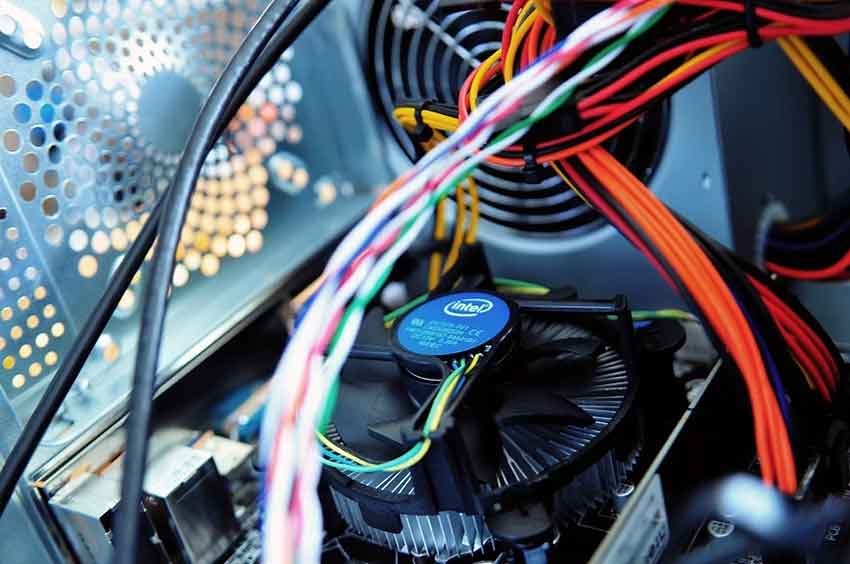Show:
Simple Troubleshooting Solutions To The Most Common Computer Problems
So, your computer is having issues? Don’t worry, it happens even to the very best of us. Luckily, the most common computer problems are often simple ones that can be solved using simple troubleshooting solutions. Therefore, you don’t need a lot of computer expertise to have an operational computer for the most part. The following are simple troubleshooting solutions to the most common computer problems:

1. Computer Not Powering On
The most common computer problem faced by owners is the device not turning on. There are hundreds of reasons why a computer will not turn on which can range from power supply failure to a malware attack. The first troubleshooting solution you should try is to check the power supply. If you are using a desktop, you should plug in your computer into a different socket and see if it works. If it is a laptop, you should leave it to charge for a few hours and then try turning it on. Also, try a different charger to ascertain that it is not an issue with the charger.
The second solution to attempt should be checking whether the monitor display of your computer is working. If your computer has power but it is not turning on, it is an issue with the display. For desktops, try connecting your PC to a different monitor and if it works, it means your display is damaged. For laptops, it may be that your computer is in sleep mode so power it down and then restart it.
Another issue that could cause your computer not to power on is failure of external hardware. Therefore, you should disconnect the hardware and then try starting your computer.
If the above steps don’t work, then it is certain that it is a software issue, not a hardware one. You should reinstall your system which will reset it in case it was infected or damaged.
2. Update Issues
Windows, like all operating systems, needs regular updates to operate properly. There are many reasons why your computer might not be updating including licensing issues, core files missing, and more.
There may be other applications on your PC that are not updating as well. If you have an app that is not opening, there is much that you can do. The simplest troubleshooting solution is to delete it and then reinstall it.
Update problems are not as serious as other issues that can plague your PC such as malware attacks. The good news is that it is a simple issue to fix. In fact, Windows has an inbuilt mechanism to fix update issues. Open your Control Panel, go to Windows Update and follow the instructions.
3. Slow Computer
The second most common issue facing computers is running slowly. It is a shame after spending so much time researching the specs of computers and buying the fastest one. For the most part, the age of the computer will determine its speed.
However, there are troubleshooting solutions you can try. Your computer has many programs that run as soon as you power your computer but only a few will consume most of the resources.
You should hence open the Task Manager and see which programs are running. Click the CPU, Memory, and Disk tabs in the Task Manager to see which programs are using the most resources. Click ‘End Task’ to close the most power-hungry programs.

Another solution you should try is disabling start-up programs which might be the reason for a slow computer. These are programs that start automatically when you power on your computer.
Launch the Task Manager and click the ‘Start Up’ tab at the top. Windows will show you which programs have the highest impact on your PC when you start it. Malware and adware are issues that plague modern computers and can make them incredibly slow. They are usually contracted when you are online browsing or downloading something.
These programs are designed to steal information from your computer and send it over the internet which will slow down your PC. You can use your antivirus to detect and delete them.
4. Noisy Hard Drive
When an organ in the body is working properly for example your liver, you don’t feel it. In exactly the same way, if there is a part of your computer that you can hear, then it is not working as it should. When that part is the hard drive, then you have an issue on your hands.
Hard drives are often silent but noisy hard drives are one of the most common computer problems you will find. When you start hearing clicking, grinding, squealing sounds or vibrations then there is a problem with the hard drive.
There are several troubleshooting solutions you can try to remedy a noisy hard drive. The first step should be to ascertain that the noise is indeed coming from the hard drive.
Unplug the power cables and other connections to the hard drive and turn on your computer. If it is silent then it is your hard drive producing the noise.
If you are sure that the sound is coming from the hard drive, you should run a hardware diagnostic. They are readily available on many computers. You can also find them online.
The hardware diagnostic can be a success or a failure. If it fails, then it means that there is an issue concerning the hard drive’s hardware. If the opposite happens then it might signal a software issue with the drive.
In the case of software, you can format the hard disk and see it if it continues to produce the sound. You can also receive other recommendations by taking it to a software expert.
If it is a hardware issue, then you have no choice but to replace the hard drive. You should ensure that you backup your files which you can transfer to your new hard drive.
The issues that can plague a computer are endless. The four above are only the most common ones. You can try the troubleshooting solutions to simply restore your computer. Otherwise, seek professional help because IT issues are best to get solved by a computer technician.

 Return to Previous Page
Return to Previous Page








